Key takeaways
- Reluctant readers often struggle due to emotional barriers, requiring patience and empathy to engage them effectively.
- Introducing Audible for Education allowed students to experience stories in a new way, fostering comprehension and encouraging discussions among peers.
- Choice in listening materials significantly increased student investment and enjoyment, transforming reading from a chore into a personal exploration.
- Measuring engagement through observed behaviors and informal interactions can provide deeper insights into student progress than traditional assessments.

Understanding Reluctant Readers
Reluctant readers aren’t simply kids who dislike books—they often carry a complex mix of frustration, self-doubt, and past negative experiences with reading. I remember a student who would shut down at the sight of a book, not because she lacked intelligence but because she felt overwhelmed and judged. Have you ever wondered how many layers hide behind silence in the classroom?
From my experience, understanding reluctant readers means recognizing that reading isn’t just about decoding words; it’s also about emotional readiness and finding personal relevance. These students need a kind of permission to explore stories on their terms without fear of failure—a concept that reshaped how I approached reading in my classroom.
What struck me most was seeing how quickly attitudes could shift once a reluctant reader found a connection, even if it wasn’t through traditional reading. It made me realize that being patient and empathetic is just as crucial as the strategies we deploy. After all, isn’t education about meeting students where they truly are?
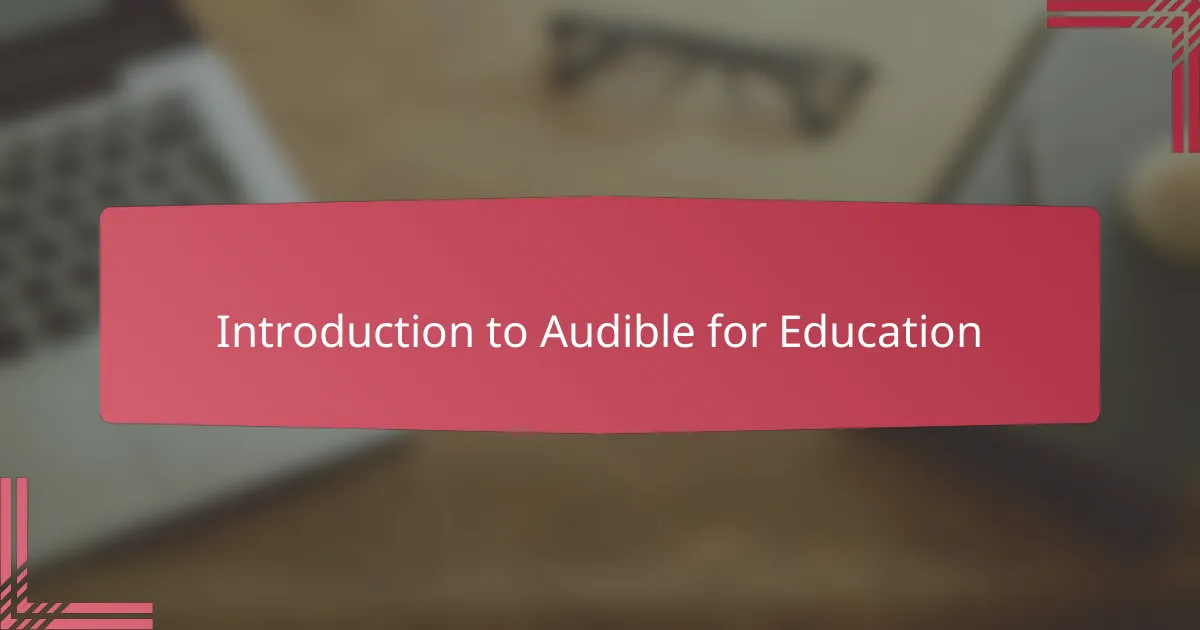
Introduction to Audible for Education
When I first introduced Audible for Education in my classroom, I was intrigued by how a simple change in format could open doors for my reluctant readers. Have you ever noticed how listening to a story can ease the pressure of decoding words, allowing students to immerse themselves fully? It was incredible to watch their faces light up when they realized stories could come alive in new ways.
Audible offers a vast library tailored for educational purposes, blending professional narration with engaging content. From my perspective, this access not only supports comprehension but also models fluent reading, which many of my students struggled to find confidence in. It felt like handing them a key to unlock stories that once felt barred by their own doubts.
What truly surprised me was how Audible became more than just a tool—it became a bridge connecting reluctant readers to language and imagination. I began to see students discussing characters and plots, sometimes even recommending books to each other, which was something I hadn’t witnessed before. Isn’t that what we hope for as educators—to spark genuine enthusiasm through thoughtful resources?
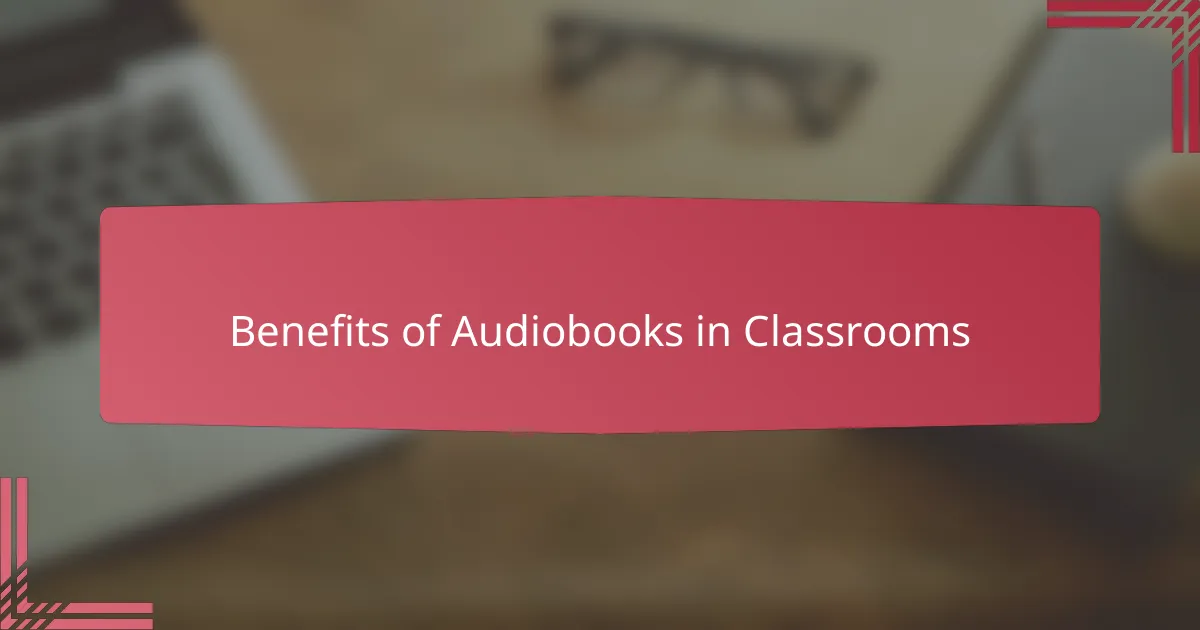
Benefits of Audiobooks in Classrooms
Audiobooks bring stories to life in a way that can feel less intimidating to students who struggle with traditional reading. I’ve seen firsthand how hearing a narrator’s voice adds emotion and rhythm, making the text more accessible and enjoyable. Isn’t it fascinating how a well-told story can capture attention when the printed page might not?
One of the biggest benefits I noticed was the boost in comprehension and vocabulary that listening provided. Students could focus on understanding the plot and characters without getting stuck on difficult words. It reminded me how important it is to separate decoding skills from actual engagement, especially for those who carry past reading anxieties.
Another surprising plus was the sense of community audiobooks sparked in my classroom. Listening together opened up opportunities for shared discussions and connections around the stories. Have you ever watched reluctant readers eagerly recommend titles to one another? That sense of ownership and pride can be a real game-changer.
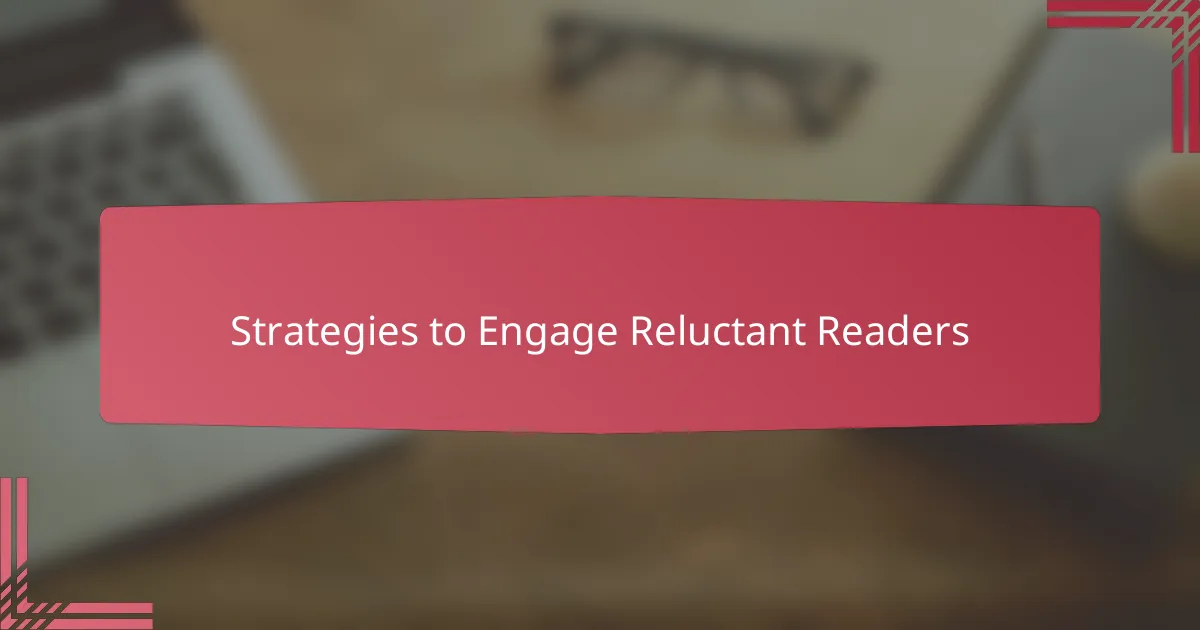
Strategies to Engage Reluctant Readers
One strategy that truly resonated with my students was offering choice. When I let reluctant readers pick what they wanted to listen to on Audible, their investment skyrocketed. Isn’t it something when students feel in control—when the story isn’t something assigned but a personal exploration? This autonomy gave them room to rediscover reading as a joy rather than a chore.
Incorporating short listening sessions followed by casual conversations also made a difference. I noticed how pausing to discuss characters or favorite scenes helped deepen their connection without pressure. Have you noticed how sometimes just talking about a story can spark curiosity to dive deeper? These moments turned listening into an interactive experience rather than a passive one.
Finally, I found that integrating audiobooks with visual aids or text supported multiple learning styles at once. For example, pairing the Audible narration with printed pages or illustrations allowed some students to follow along and build confidence. Isn’t it powerful to see a reluctant reader’s eyes light up when all pieces start clicking together? This multi-sensory approach truly breaks down barriers.
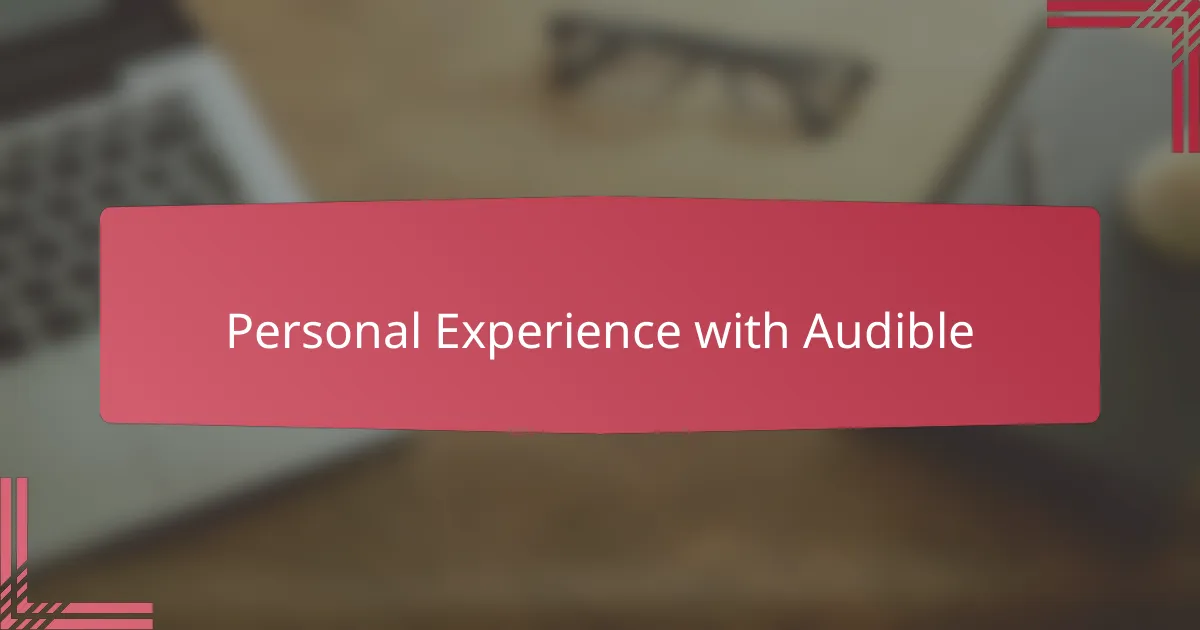
Personal Experience with Audible
When I first played an Audible audiobook for my most hesitant reader, I was surprised by the calm that settled over the room. Her usual restlessness gave way to quiet focus, as if the narrator’s voice was offering an invitation rather than a challenge. Have you ever witnessed that moment when a student’s resistance softens simply because the story finds them in a different way?
I remember one boy who struggled not only with reading skills but also with frustration that made him withdraw. Offering him Audible felt like giving him permission to enjoy stories without the heavy burden of decoding. It was rewarding to see him later recount details from the tale with genuine excitement—something I hadn’t seen in weeks.
What struck me most was how Audible became more than a substitute for reading; it became a shared experience. Students would recommend titles to each other with enthusiasm, turning listening into a social adventure. Isn’t it remarkable when a tool intended to support skill-building ends up sparking authentic connections instead?
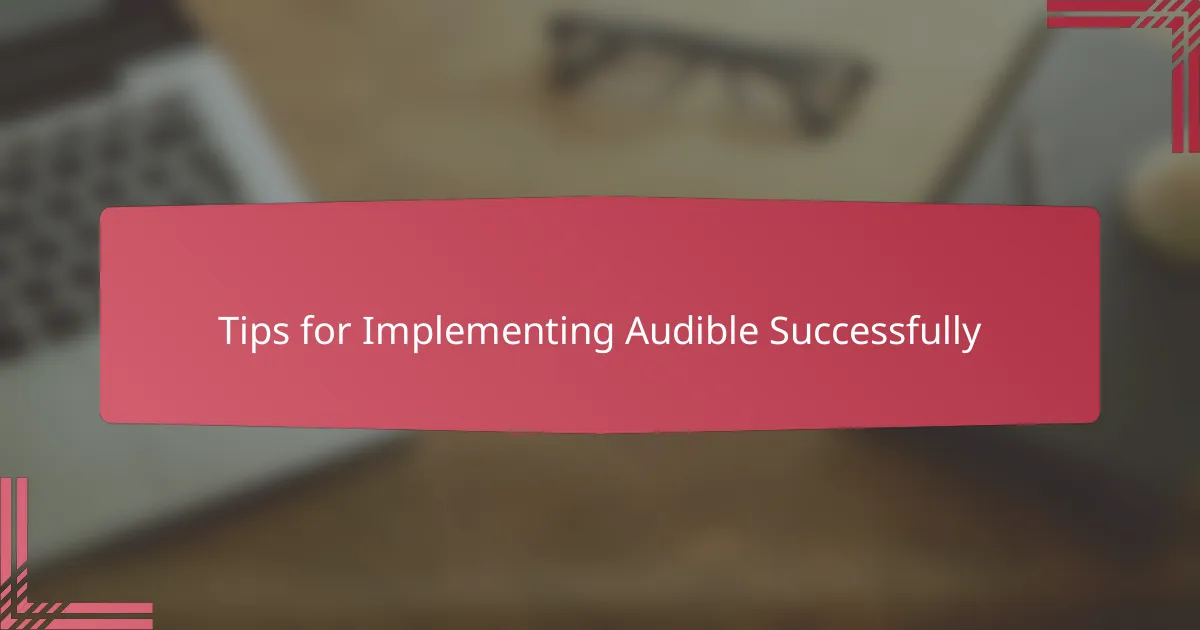
Tips for Implementing Audible Successfully
One tip I found essential was setting clear, manageable goals for listening sessions. When I started with short, focused segments, students didn’t feel overwhelmed and were eager to return for more. Doesn’t it make sense that small successes build the confidence needed to keep going?
Another important piece was creating a routine around Audible use. I noticed that when audiobook time became a regular, welcomed part of the day, my reluctant readers began to anticipate it rather than resist it. Establishing this predictability provided a safe space where they could relax and engage without pressure.
Lastly, I always encouraged reflection, whether through quick chats or simple journals. Asking students what stood out or how a story made them feel helped deepen their connection and turned listening into active learning. Have you ever seen how transformational it is when students start owning their responses instead of passively absorbing content?
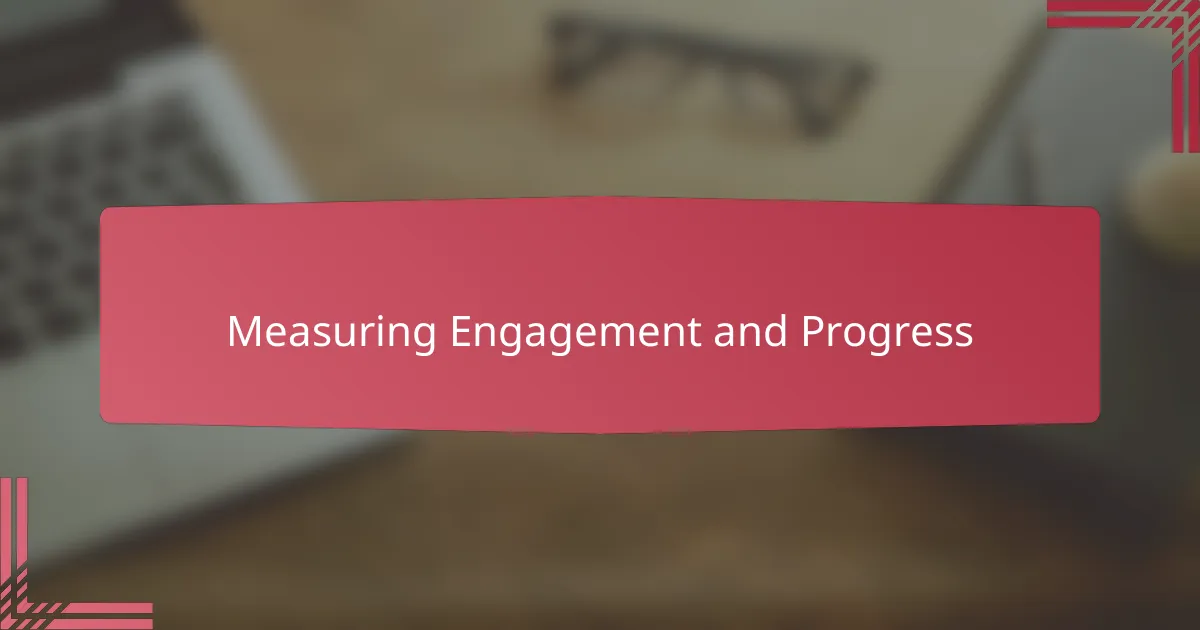
Measuring Engagement and Progress
Measuring engagement with Audible wasn’t just about tracking who pressed play; it was about noticing the little shifts in my students’ behavior. For example, I saw one usually withdrawn girl start leaning forward, eyes bright, as the narrator’s voice pulled her in. Doesn’t that tell us more about engagement than any quiz score ever could?
Progress, from my perspective, unfolded in moments where students began to talk about books without prompting—sharing favorite characters or predicting plot twists. I kept informal notes on these interactions because they showed growth far beyond reading levels or test results. Isn’t genuine curiosity and discussion a better marker of progress than numbers on a page?
Of course, I paired listening time with quick comprehension checks—simple questions that sparked thinking without pressure. It helped me see who was truly connecting to the story and who might need more support. Have you found that a gentle approach to assessment can reveal more about a student’s journey than rigid testing? This balance was key in understanding how Audible was helping my reluctant readers flourish.